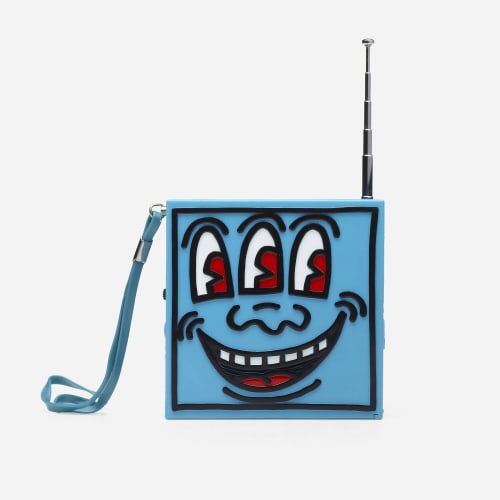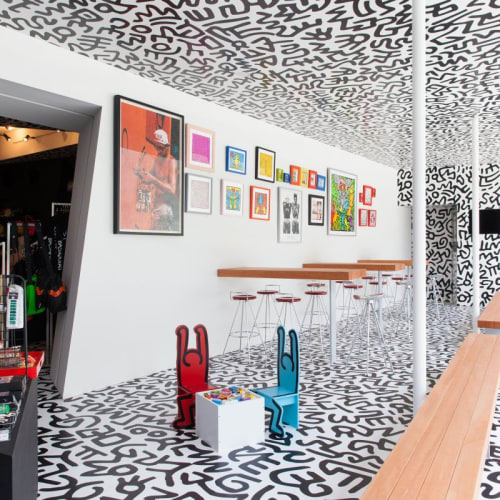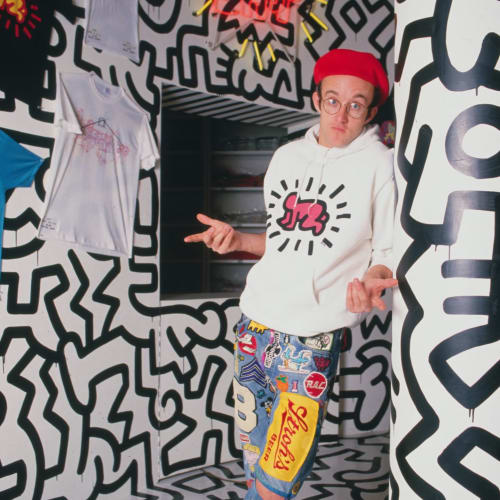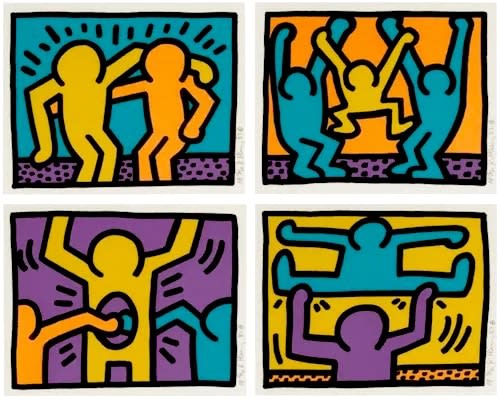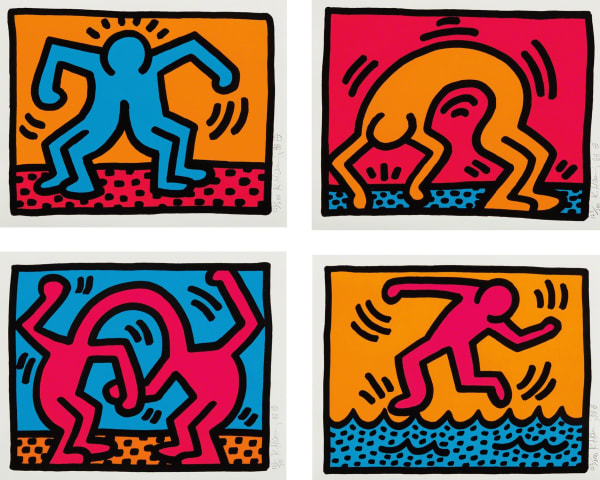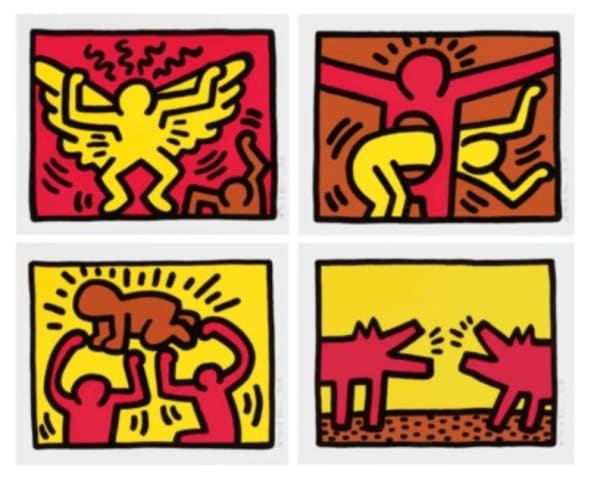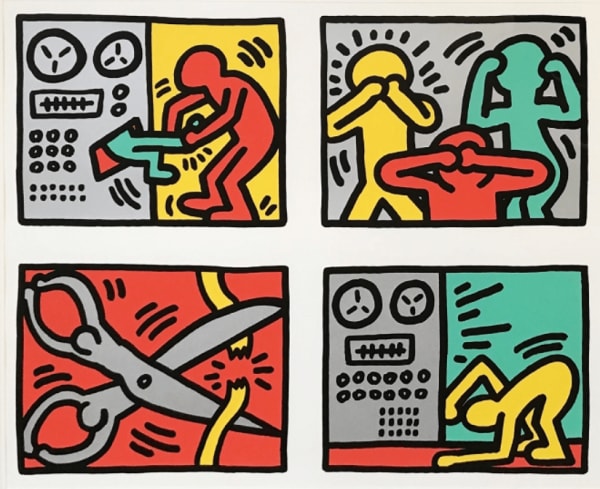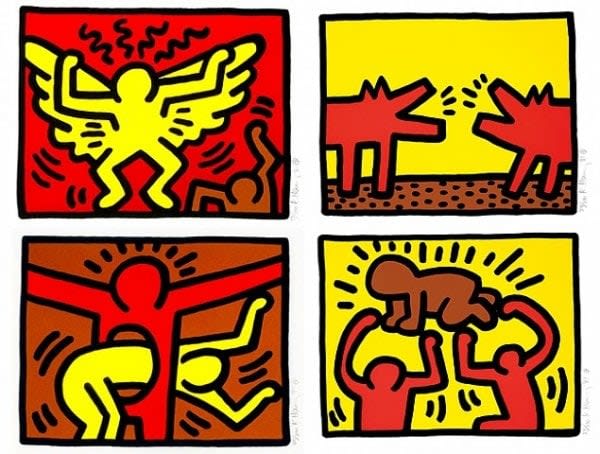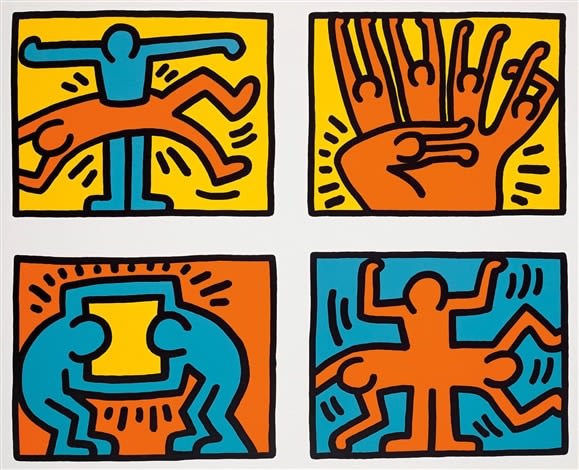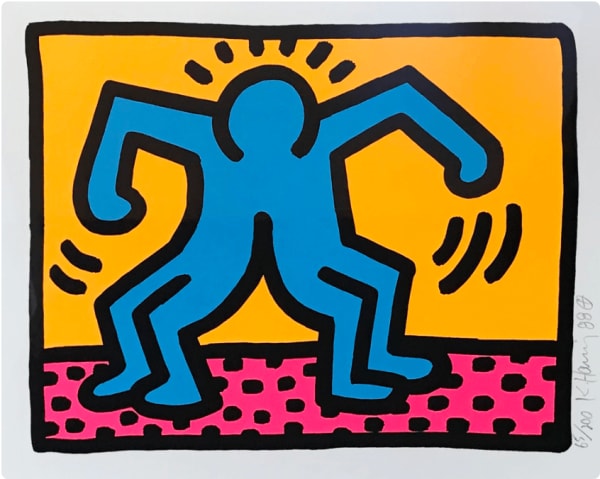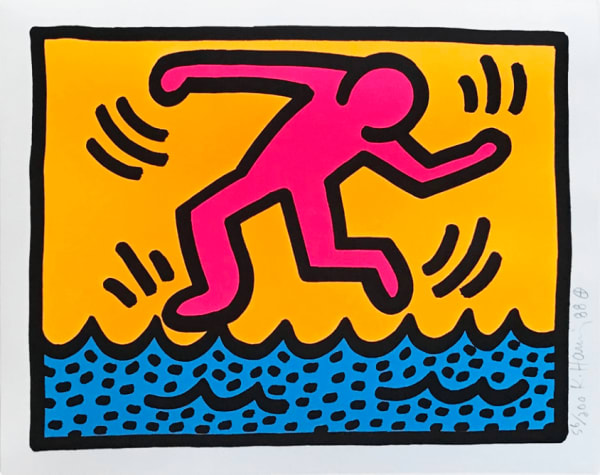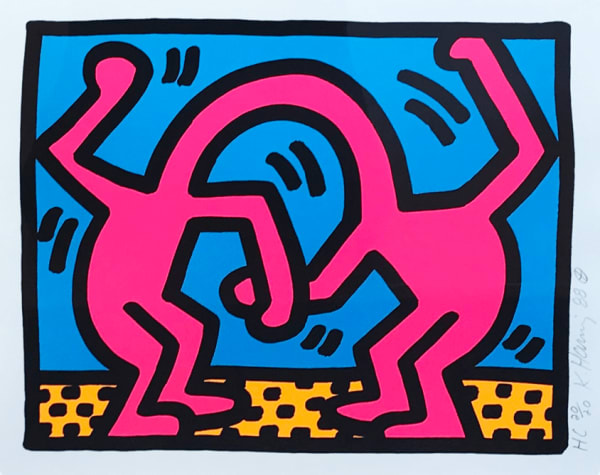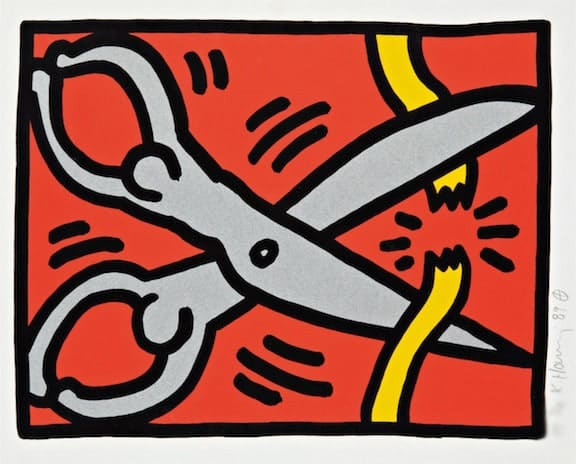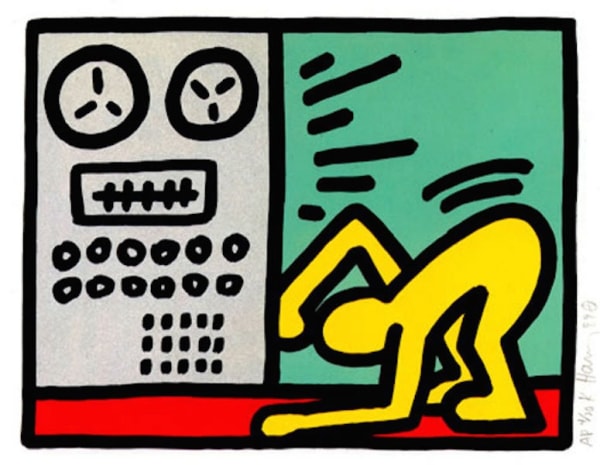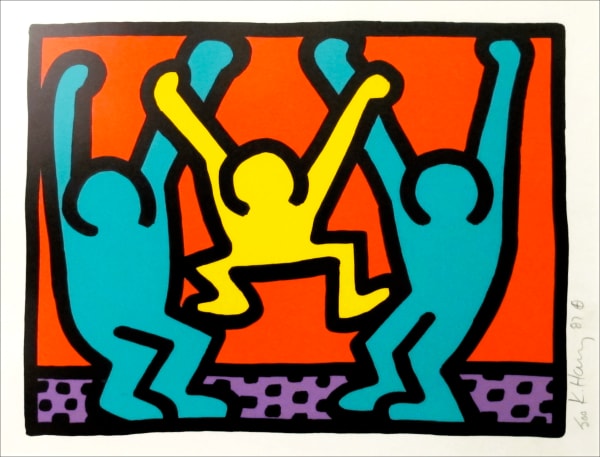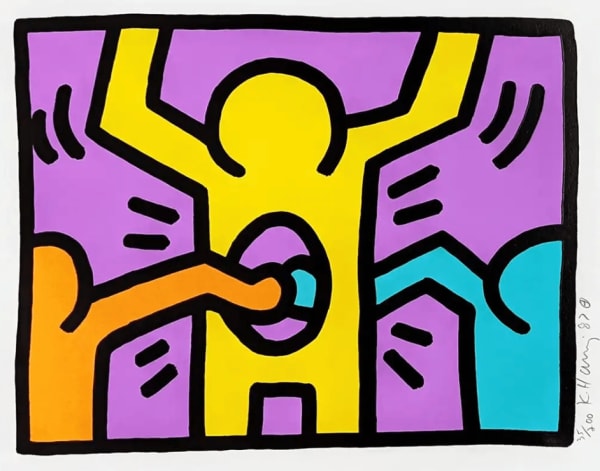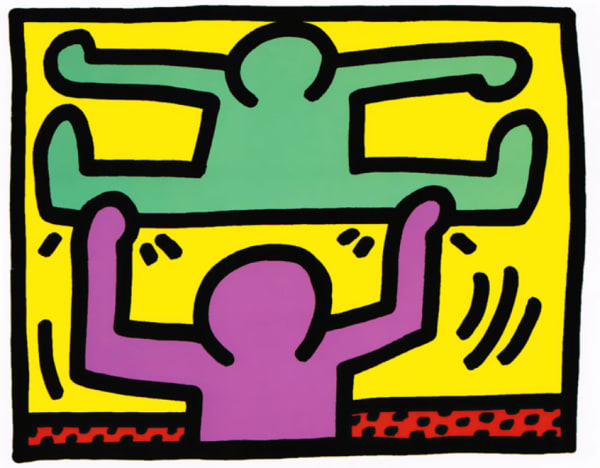In the vibrant landscape of 1980s New York City, amidst the dynamic interplay of art, culture, and commerce, Keith Haring established the Pop Shop in 1986—a groundbreaking venture that would challenge conventional boundaries between art and the public sphere. Haring, already renowned for his infectious, emblematic imagery that adorned subway walls and cityscapes, sought to create a space where his art could be accessible to everyone, transcending the traditional confines of galleries and museums.
The Pop Shop, located in SoHo, a neighborhood synonymous with the avant-garde art scene, was more than just a retail outlet; it was an extension of Haring's artistic ethos and a physical manifestation of his democratic vision for art. The shop's interior, adorned with Haring's signature motifs—barking dogs, radiant babies, and flying saucers—offered a dizzying immersion into his world. The walls, floor, and ceiling became canvases, blurring the lines between commercial space and art installation.
Haring's decision to sell his artwork and merchandise—ranging from t-shirts and buttons to posters and toys—at affordable prices was revolutionary. He faced criticism from some quarters of the art world, who argued that commercializing art would diminish its value. However, Haring remained undeterred, believing that art's true value lay in its ability to communicate and connect with people, rather than in its price tag. He famously stated, "The Pop Shop makes my work accessible. It's about participation on a big level."
The Pop Shop became a hub of activity, attracting a diverse crowd that included art aficionados, tourists, celebrities, and locals. It embodied the zeitgeist of the era, a time marked by a fervent exploration of identity, community, and social activism. Haring himself was deeply involved in various social causes, and the shop became a platform for advocating AIDS awareness and LGBTQ+ rights, themes that were central to his work and life.
Despite Haring's untimely death in 1990, the Pop Shop continued to operate until 2005, serving as a testament to his legacy and the enduring appeal of his art. The closure of the physical shop did not mark the end of the Pop Shop concept; it has since been reincarnated in various forms, including pop-up exhibitions and online platforms, ensuring that Haring's vision of art for all continues to thrive.
The history of Keith Haring's Pop Shop is a compelling narrative of art's power to break barriers and enrich the public domain. It stands as a pioneering example of how artists can engage with the commercial world on their own terms, challenging the art establishment and redefining the relationship between creator and community. Haring's Pop Shop was not merely a store but a radical experiment in bringing art into the everyday, a legacy that continues to inspire and resonate within the contemporary art world.
January 7, 2024

